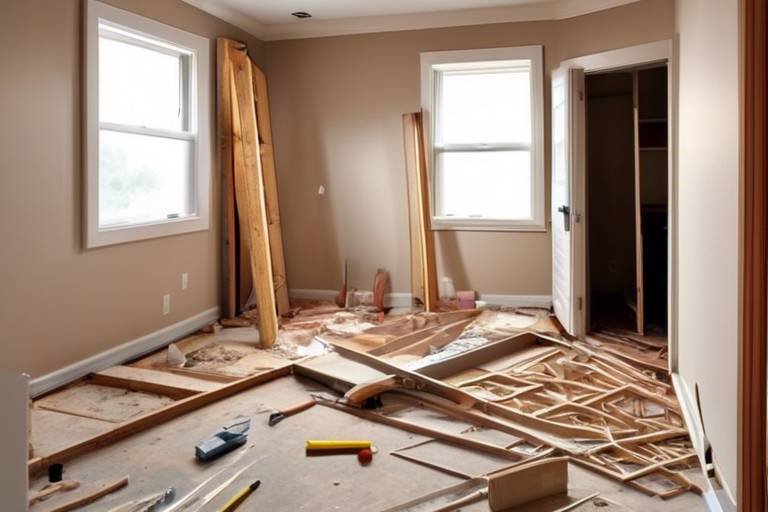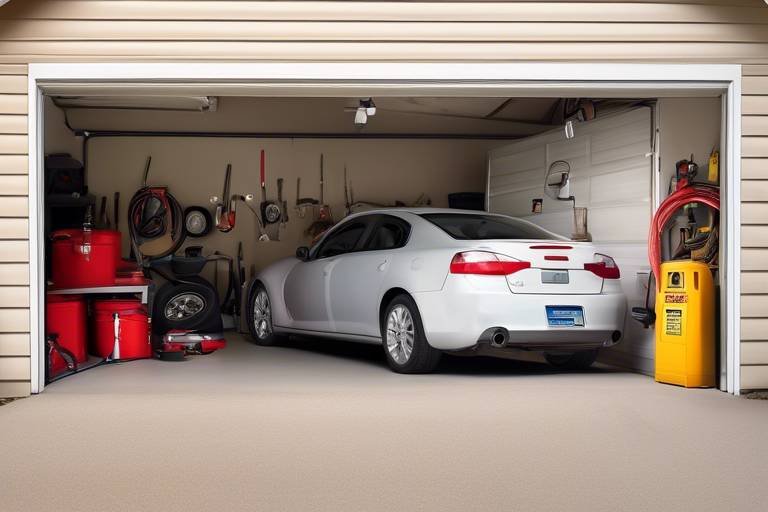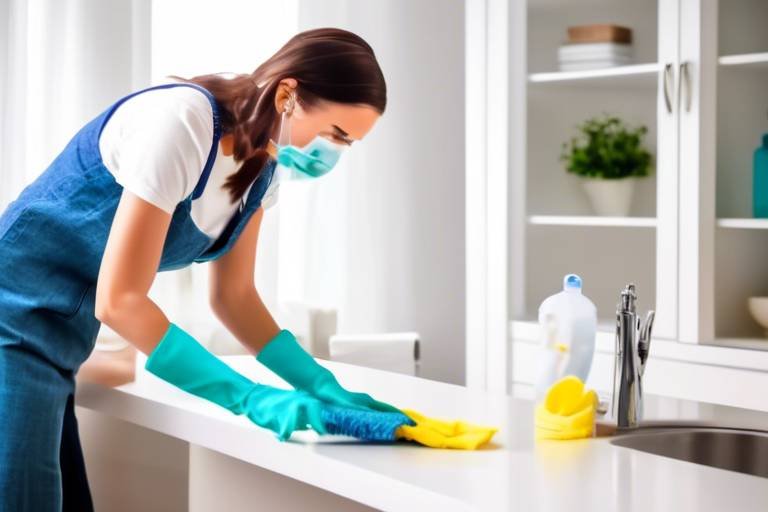The Importance of Radon Testing in Homes
When it comes to creating a safe haven for your family, many homeowners often overlook a silent intruder lurking in their basements and crawlspaces: radon gas. This colorless, odorless gas is a byproduct of the natural decay of uranium found in soil, rock, and water. As it seeps into homes, it can accumulate to dangerous levels, posing serious health risks, particularly the risk of lung cancer. Ignoring radon testing is akin to ignoring smoke alarms—both are essential for safeguarding your home and loved ones. So, why is radon testing so vital, and how can you ensure your home is free from this hazardous gas?
First and foremost, understanding radon is crucial. It’s not just about knowing that it exists; it’s about recognizing its potential impact on your health. In fact, radon is the second leading cause of lung cancer in the United States, according to the Environmental Protection Agency (EPA). This staggering statistic should serve as a wake-up call for homeowners. Testing your home for radon is an essential step in protecting your family's health, especially if you live in areas known for high radon levels.
In addition to health risks, radon testing can also affect property values. Homes with known radon issues may be harder to sell, or they may fetch lower prices. By investing in radon testing and, if necessary, mitigation, you not only protect your family but also preserve your property’s value. Think of radon testing as a preventative measure—like regular check-ups with your doctor. It’s always better to catch potential problems early than to deal with the consequences later.
But how do you go about testing for radon? It’s simpler than you might think. Homeowners can choose between short-term and long-term testing methods. Short-term tests are typically conducted over a few days to a week, while long-term tests can provide a more accurate representation of radon levels over several months. Both methods are relatively easy to use and can be found at local hardware stores or online. If you’re unsure about conducting the test yourself, hiring a professional is always an option.
Once you’ve tested your home, you’ll have a clearer picture of your radon levels. If they exceed the EPA’s recommended action level of 4 picocuries per liter (pCi/L), it’s time to take action. Mitigation strategies can vary, but the most common method involves installing a radon mitigation system that ventilates radon gas outside your home. This is where understanding your options becomes crucial. Whether you opt for professional services or decide to tackle it yourself, the important thing is to act promptly.
In conclusion, radon testing is not just a recommendation; it’s a necessity for any homeowner who values their family's health and safety. The process is straightforward, and the peace of mind it provides is invaluable. So, take the plunge—test your home for radon today. After all, a safe home is a happy home!
- What is radon? Radon is a naturally occurring gas that results from the decay of uranium in soil, rock, and water.
- How can I test my home for radon? You can use short-term or long-term radon testing kits available at hardware stores or hire a professional.
- What should I do if my home has high radon levels? If levels exceed 4 pCi/L, it’s essential to implement mitigation strategies, such as installing a radon reduction system.
- Is radon testing expensive? Testing kits are relatively inexpensive, and the cost of professional testing and mitigation can vary but is often worth the investment for safety.
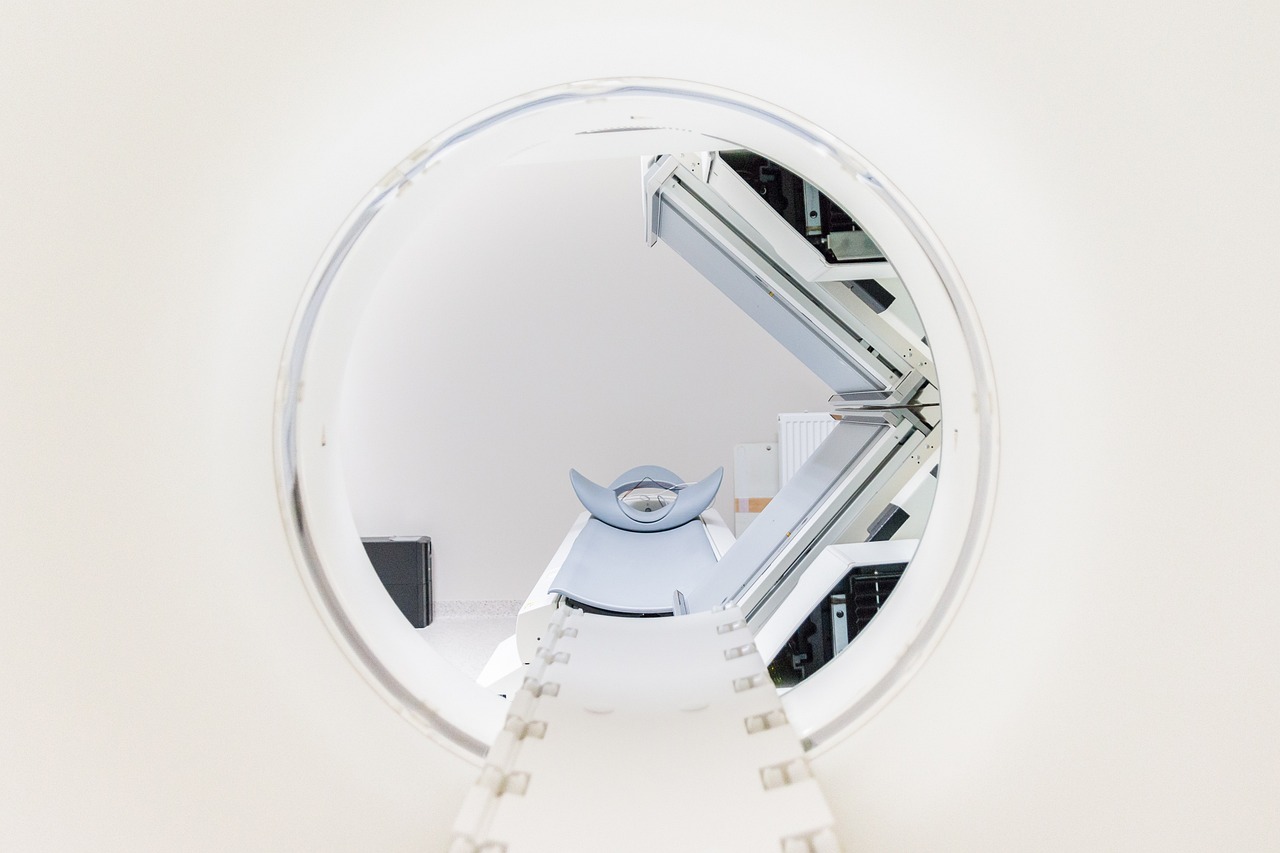
Understanding Radon Gas
Radon is a colorless, odorless, and tasteless gas that occurs naturally as a byproduct of the decay of uranium in soil, rock, and water. This invisible intruder can seep into homes through cracks in floors, walls, and foundations, as well as through gaps around service pipes and construction joints. While we often think of our homes as safe havens, radon can quietly infiltrate these spaces, often without our knowledge. Understanding the nature of radon is crucial for homeowners, as it can pose serious health risks if left unchecked.
Radon gas is a noble gas, which means it is chemically inert and does not easily react with other substances. This property, combined with its ability to accumulate in enclosed spaces, makes it particularly dangerous. The Environmental Protection Agency (EPA) has identified radon as the second leading cause of lung cancer in the United States, following smoking. In fact, it is estimated that radon is responsible for about 21,000 lung cancer deaths each year. This statistic alone underscores the importance of being aware of radon levels in your home.
So, where does radon come from? It originates from the natural breakdown of uranium, which is found in varying amounts in soil and rock. As uranium decays, it releases radon gas, which can then move through the ground and enter buildings. The concentration of radon in a home can depend on several factors, including:
- The geological characteristics of the area
- The construction of the home
- The ventilation of the home
Given these factors, it’s clear that radon levels can vary significantly from one location to another. Some homes in certain regions may have high levels of radon, while others nearby may not. Therefore, it’s essential for homeowners to conduct regular radon testing to ensure their living environment is safe.
In summary, understanding radon gas and its origins is the first step in safeguarding your home and family. By being aware of its presence and the risks associated with it, you can take proactive measures to protect your health. Remember, knowledge is power, and when it comes to radon, that knowledge could be life-saving.

Health Risks Associated with Radon
When it comes to harmful substances lurking in our homes, radon is often an unseen enemy. This colorless, odorless gas can seep into your living space from the ground beneath your feet, and its presence can have dire consequences for your health. The most alarming risk associated with radon exposure is its strong link to lung cancer. In fact, the U.S. Environmental Protection Agency (EPA) estimates that radon is responsible for about 21,000 lung cancer deaths each year in the United States alone. Can you imagine the impact of something you can't even see or smell?
But radon isn't just a concern for smokers or those with pre-existing lung conditions; it poses a risk to everyone. Long-term exposure to elevated radon levels can lead to serious health issues, as the gas decays into radioactive particles that can be inhaled. These particles can damage lung tissue, increasing the likelihood of cancer over time. It's critical to understand that radon exposure is a cumulative risk—meaning that the longer you are exposed, the greater your risk becomes. This is why testing for radon is not just a recommendation; it's an essential step in protecting your family's health.
To put things into perspective, consider the following statistics:
| Statistic | Value |
|---|---|
| Annual lung cancer deaths due to radon | 21,000 |
| Percentage of homes with elevated radon levels | 1 in 15 |
| Increase in lung cancer risk for smokers exposed to radon | Up to 10 times greater |
Furthermore, certain populations are more vulnerable to the health risks posed by radon. For instance, smokers are at a significantly higher risk, as the combination of smoking and radon exposure exponentially increases the chances of developing lung cancer. Additionally, individuals living in areas with high radon levels—often determined by geological factors—should be particularly vigilant. These regions, often found in basements or poorly ventilated homes, can trap radon gas, leading to dangerously high concentrations.
In summary, the health risks associated with radon are not to be taken lightly. The invisible threat can lead to devastating outcomes, making regular testing and awareness essential. By understanding the dangers, we can take proactive steps to ensure our homes are safe havens, free from the lurking risks of radon exposure.
- What is radon? Radon is a naturally occurring radioactive gas that can accumulate indoors, particularly in basements and lower levels of homes.
- How can I test for radon in my home? You can purchase a radon testing kit online or hire a professional to conduct the test for you.
- What should I do if my home has high radon levels? If high levels are detected, consider mitigation strategies such as installing a radon reduction system to lower the concentration.

Statistics on Radon Exposure
When it comes to understanding the impact of radon in our homes, statistics reveal some startling truths. Did you know that radon is the second leading cause of lung cancer in the United States, right after smoking? According to the Environmental Protection Agency (EPA), radon is responsible for approximately 21,000 lung cancer deaths each year. That’s a jaw-dropping number, especially considering that many people are unaware of the radon levels lurking in their own basements.
To further illustrate the prevalence of radon, studies have shown that about 1 in 15 homes in the U.S. has elevated radon levels, which are defined as 4 picocuries per liter (pCi/L) or higher. This statistic is particularly alarming when we consider that radon levels can vary significantly from one home to another—even in neighboring houses. The EPA recommends that homeowners test their homes for radon, particularly in areas known for high radon concentrations.
Here’s a breakdown of some key statistics regarding radon exposure:
| Statistic | Value |
|---|---|
| Lung Cancer Deaths Attributed to Radon | 21,000 annually |
| Homes with Elevated Radon Levels | 1 in 15 |
| Percentage of Homes Tested | Approximately 10% |
| Radon Levels in New Homes | Can be higher due to construction methods |
These numbers highlight a crucial point: many homeowners are unaware of the risks associated with radon exposure. In fact, only about 10% of homes in the U.S. have been tested for radon. This suggests a significant gap in public awareness and action. Many people might think, "It won't happen to me," but the reality is that radon can be a silent intruder in your home, often going undetected until it’s too late.
Furthermore, radon levels can fluctuate based on various factors, including weather conditions and home ventilation. For instance, during colder months, homes are often sealed tightly, which can trap radon inside and lead to higher concentrations. This seasonal variation means that even if your home tested safe last year, it might not be safe now. Regular testing is essential to ensure your family's safety.
In conclusion, the statistics surrounding radon exposure are not just numbers; they represent real lives affected by this invisible gas. Understanding these statistics can empower homeowners to take action, whether it’s testing their homes or advocating for better awareness in their communities. After all, knowledge is the first step toward ensuring a safe living environment.
- What is radon? Radon is a colorless, odorless gas that occurs naturally from the decay of uranium in soil, rock, and water.
- How can I test my home for radon? You can purchase a radon testing kit online or hire a professional to conduct the test for you.
- What should I do if my radon levels are high? If your radon levels exceed 4 pCi/L, it’s recommended to take action to reduce those levels, such as installing a radon mitigation system.
- How common is radon in homes? About 1 in 15 homes in the U.S. has elevated radon levels, making it a significant health concern.

Radon and Lung Cancer Rates
Research has consistently shown a significant correlation between radon exposure and lung cancer rates. In fact, radon is the second leading cause of lung cancer in the United States, following smoking. According to the Environmental Protection Agency (EPA), radon is responsible for approximately 21,000 lung cancer deaths annually. This staggering statistic underscores the critical need for homeowners to be aware of radon levels in their residences.
The risk of developing lung cancer from radon exposure is particularly pronounced among smokers. Studies indicate that smokers who are exposed to high levels of radon can have their risk of lung cancer increased by up to ten times compared to non-smokers. This is because the combination of tobacco smoke and radon creates a synergistic effect, significantly heightening cancer risk. To put it simply, if you smoke and live in a high-radon area, your chances of developing lung cancer are alarmingly high.
Furthermore, the risk is not uniformly distributed; it varies based on geographic location, home construction types, and the presence of ventilation systems. For instance, homes built on granite or uranium-rich soil are more susceptible to radon accumulation. The World Health Organization (WHO) has classified radon as a Group 1 carcinogen, which means there is sufficient evidence to conclude that it is a definitive cause of cancer in humans.
To illustrate the impact of radon exposure on lung cancer rates, consider the following table:
| Radon Level (pCi/L) | Estimated Lung Cancer Deaths per 1,000 People |
|---|---|
| 0-2 | 0.4 |
| 2-4 | 1.2 |
| 4-8 | 2.4 |
| 8+ | 4.8 |
This table clearly shows that as radon levels increase, so do the estimated lung cancer deaths. This is a sobering reminder of why testing for radon is not just a precaution but a necessity for every homeowner. Regular testing can help identify elevated radon levels before they pose a serious health risk, allowing families to take action and reduce their exposure.
In summary, understanding the relationship between radon exposure and lung cancer rates is vital for safeguarding your health and the health of your loved ones. By being proactive about testing and mitigation, you can significantly lower the risks associated with this silent killer.
- What is radon? Radon is a naturally occurring, colorless, odorless gas that can accumulate in homes, especially in basements and lower levels.
- How can I test for radon in my home? You can purchase a radon testing kit from a hardware store or hire a professional to conduct the test for you.
- What should I do if my home has high radon levels? If radon levels are above 4 pCi/L, it is recommended to take mitigation measures, which can include sealing cracks and installing ventilation systems.
- Is radon testing necessary if I live in a new home? Yes, radon testing is important regardless of the age of your home, as radon can still accumulate in new constructions.

Vulnerable Populations
When it comes to the dangers of radon exposure, not everyone is equally at risk. Certain groups of individuals find themselves more vulnerable to the harmful effects of this invisible gas, making it imperative to understand who they are and why they should be prioritized in radon testing and mitigation efforts. One of the most significant at-risk populations includes smokers. The combination of smoking and radon exposure dramatically increases the likelihood of developing lung cancer, creating a dangerous synergy that can have devastating consequences. If you or someone in your household smokes, it’s crucial to be even more vigilant about radon levels.
Another group that requires special attention is those living in high-radon areas. Geographic location plays a critical role in radon levels; homes situated in certain regions, particularly those with high uranium content in the soil, are more likely to have elevated radon concentrations. If you reside in an area known for its radon issues, you should consider testing your home, regardless of whether you notice any symptoms or signs.
Furthermore, children are particularly susceptible to the effects of radon exposure. Their developing bodies and lungs are more vulnerable, and studies suggest that children may be at a higher risk of developing lung cancer later in life if exposed to radon during their formative years. As a parent, it’s your responsibility to ensure that your home environment is safe for your children, which includes conducting regular radon tests.
Finally, the elderly and individuals with pre-existing health conditions also fall into the vulnerable category. Their immune systems may not be as robust, making it harder for them to cope with the damaging effects of radon. Being proactive about radon testing in homes occupied by these populations is not just a recommendation; it’s a necessity.
To summarize, here are the key vulnerable populations that should be prioritized in radon testing:
- Smokers - Increased risk when combined with radon exposure
- Residents of high-radon areas - Geographic risk factors
- Children - Developing bodies are more susceptible
- The elderly and those with health conditions - Weaker immune systems
Understanding these vulnerable populations helps in advocating for more stringent radon testing and mitigation measures. By raising awareness and taking action, we can work towards creating safer living environments for everyone.
Q: What is radon and why is it dangerous?
A: Radon is a colorless, odorless gas produced from the natural breakdown of uranium in soil and rocks. It can accumulate in homes and is a leading cause of lung cancer among non-smokers.
Q: How can I test my home for radon?
A: You can test your home for radon using DIY test kits available at hardware stores or hire a professional service for more comprehensive testing.
Q: What should I do if radon levels are high in my home?
A: If high radon levels are detected, it is crucial to implement mitigation strategies, which may include ventilation systems or sealing cracks in floors and walls.
Q: Is radon exposure only a concern in certain areas?
A: While radon can be found in homes everywhere, certain geographic areas have higher concentrations due to the underlying geology. It’s advisable to check local radon maps or consult with local health departments.
Q: Can radon levels change over time?
A: Yes, radon levels can fluctuate based on various factors, including weather conditions and changes in ventilation. Regular testing is recommended to ensure ongoing safety.
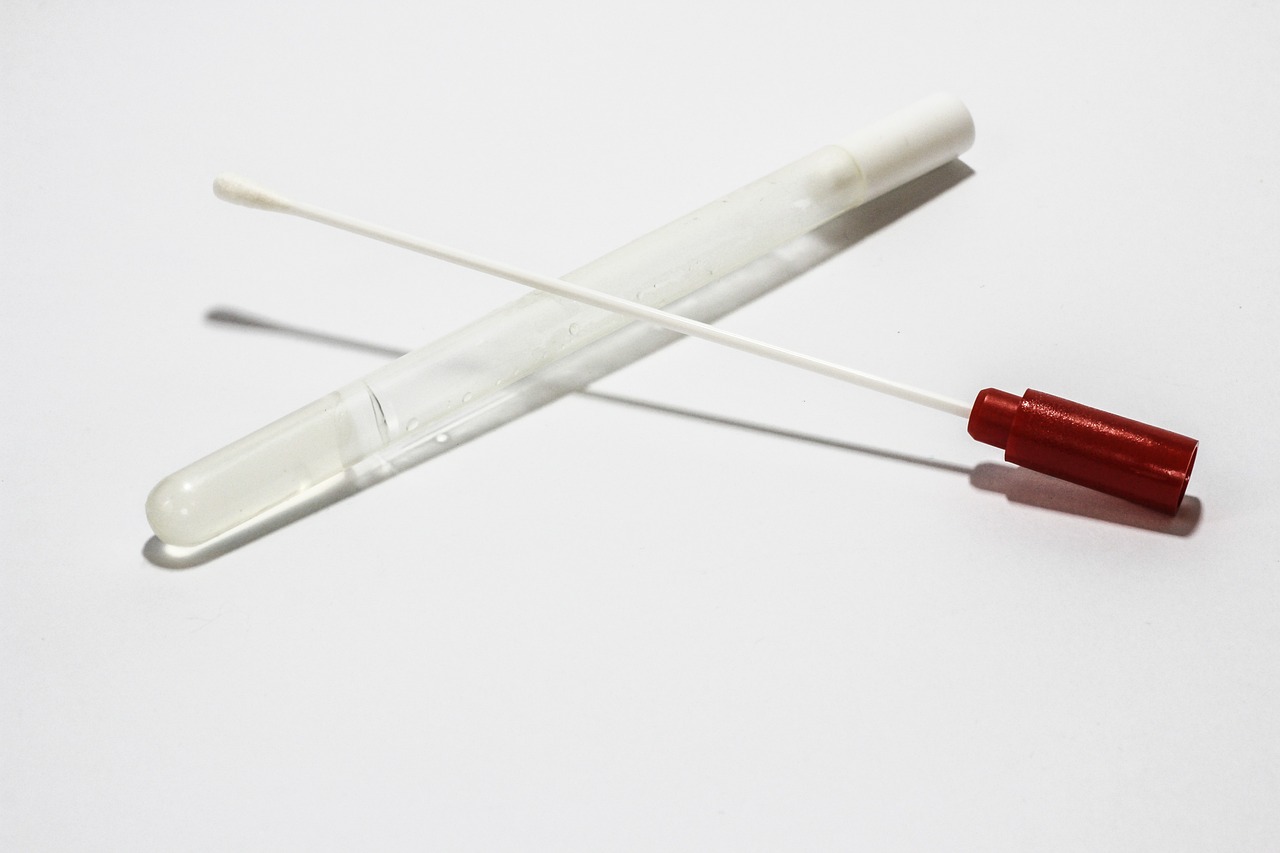
Testing Methods for Radon
When it comes to ensuring the safety of our homes, testing for radon is an essential step that should not be overlooked. Radon testing can be done using various methods, each with its own advantages and effectiveness. Understanding these methods can empower homeowners to take action against this invisible threat. So, how can you test for radon? Let's dive into the most common methods.
One of the most popular methods is the use of short-term testing kits. These kits are typically left in your home for a period of 2 to 90 days, depending on the product. They are easy to use and can provide quick results, making them ideal for those who want to get a snapshot of their radon levels without much hassle. Upon completion, you simply send the kit to a lab for analysis, and they will provide you with the results.
On the other hand, if you're looking for a more comprehensive assessment, long-term testing kits might be the way to go. These kits remain in your home for more than 90 days, capturing a more accurate picture of your radon levels over time. This method is particularly effective because radon levels can fluctuate based on various factors, including weather conditions and household activities. By using a long-term test, you can ensure that you are not just getting a false reading based on a temporary spike in radon levels.
For those who prefer a more hands-on approach, there are also electronic radon detectors. These devices provide real-time monitoring of radon levels and can be a great investment for homeowners who want ongoing awareness of their indoor air quality. They can alert you immediately if radon levels become elevated, allowing you to take swift action. However, it's important to note that these devices can be more expensive than traditional testing kits.
In addition to these methods, it's crucial to consider the placement of your testing equipment. Radon is typically more concentrated in areas such as basements and crawl spaces, so it's advisable to conduct tests in these locations. If you're using a short-term kit, make sure to follow the instructions carefully regarding where and how to place the device. And remember, testing should ideally be done during the heating season, as homes are usually closed up, which can lead to higher radon levels.
To summarize, here are the primary testing methods for radon:
- Short-term testing kits: Quick results, easy to use, ideal for initial testing.
- Long-term testing kits: More accurate, captures fluctuations over time.
- Electronic radon detectors: Real-time monitoring, immediate alerts for elevated levels.
It's important to remember that no matter which method you choose, testing for radon is an essential step in protecting your family's health. If you find elevated levels of radon in your home, don't panic! There are effective mitigation strategies available to help reduce those levels and create a safer living environment.
Q: How often should I test my home for radon?
A: It's recommended to test your home for radon every two years or after any major renovations.
Q: Can I test for radon myself?
A: Yes, there are many DIY radon testing kits available that you can use to test your home.
Q: What should I do if my radon levels are high?
A: If your radon levels exceed 4 pCi/L, it's advisable to take action and consider mitigation options.
Q: Are there specific areas more prone to radon?
A: Yes, certain geographical areas are known to have higher radon levels, particularly those with granite and uranium-rich soil.

Mitigation Strategies for Radon
When it comes to tackling the invisible threat of radon gas in our homes, knowledge is power. If you've discovered elevated radon levels, the next crucial step is to implement effective mitigation strategies to ensure your living environment is safe for you and your family. Mitigation is not just about reducing radon levels; it's about creating a healthy home where you can breathe easy. So, what are the best approaches to combat this silent intruder?
First and foremost, it's essential to understand that there are both professional and DIY options for radon mitigation. Professional services often provide the most comprehensive solutions, utilizing advanced techniques and equipment to significantly lower radon concentrations. For instance, a common method employed by professionals is the installation of a radon mitigation system, which typically includes a vent pipe and fan to draw radon from beneath the home and release it safely into the atmosphere. This method can reduce radon levels by up to 99% in some cases, making it a highly effective solution.
However, if you're the type of person who enjoys getting hands-on, there are also several DIY mitigation techniques you can explore. For example, sealing cracks in floors and walls can help to minimize radon entry. While this method alone won't eliminate radon, it can significantly reduce the amount that seeps into your home. Additionally, improving ventilation in your home can help dilute radon concentrations. Opening windows and using fans can create a more breathable atmosphere, especially in areas known to have higher radon levels.
It's also worth mentioning that the effectiveness of these strategies can vary based on your home's construction and the specific radon levels detected. Therefore, it's advisable to conduct follow-up testing after implementing any mitigation strategy to ensure that radon levels have decreased to a safe range. If you find that levels remain high, don't hesitate to consult with professionals who specialize in radon mitigation. They can provide tailored solutions that address the unique challenges of your home.
In summary, whether you choose to go the professional route or tackle the issue yourself, the key is to act promptly. Remember, radon is a serious health risk, and taking steps to mitigate its presence can safeguard your family's health. By understanding the available mitigation strategies and their effectiveness, you can make informed decisions that lead to a safer, healthier living environment.
- What is the average cost of radon mitigation?
Costs can vary widely based on your home's size and the mitigation method chosen, but generally, professional radon mitigation systems can range from $800 to $2,500. - How long does radon mitigation take?
Most professional mitigation systems can be installed within a day, but the exact time frame can depend on the complexity of the installation. - Can I test for radon myself?
Yes, there are DIY radon testing kits available that can provide a preliminary assessment of radon levels in your home. - How often should I test for radon?
It's recommended to test your home for radon every two years, or after any major renovations that may affect radon levels.

Professional Mitigation Services
When it comes to ensuring your home is safe from the dangers of radon gas, can be a game changer. These specialists are trained to identify high radon levels and implement effective strategies to reduce those levels, providing peace of mind for homeowners. But what exactly does the process entail?
First off, hiring a professional means you’re not just getting someone to slap a band-aid on the problem. These experts will conduct a thorough assessment of your home, measuring radon levels with precision instruments. They understand the intricacies of radon behavior and how it interacts with your home’s structure. This is crucial because radon can seep in through cracks in floors, walls, and even construction joints, making it essential to pinpoint the sources accurately.
Once they’ve determined the radon concentration and identified entry points, professionals often recommend a system known as sub-slab depressurization. This method involves installing a vent pipe and fan system that pulls radon from beneath the foundation and expels it safely into the atmosphere, away from your home. It’s like giving your house a breath of fresh air! The installation process typically takes just a few hours, and once it’s up and running, you can feel more secure knowing that the radon levels are being actively managed.
Moreover, many professional services offer post-mitigation testing to ensure the system is working effectively. This follow-up is crucial because it confirms that radon levels have dropped to a safe range, usually below 4 pCi/L (picocuries per liter), as recommended by the EPA. If the levels are still high, they will make adjustments to the system until your home is as safe as possible.
Another advantage of hiring professionals is the warranty and maintenance services they often provide. Just like your car, your radon mitigation system needs regular check-ups to ensure it’s functioning optimally. Many companies offer annual inspections, which can save you from potential issues down the road. This ongoing support can be invaluable for homeowners who want to ensure long-term safety.
In summary, while DIY methods may seem tempting, the complexity and potential risks associated with radon exposure make professional mitigation services a wise investment. They not only bring expertise and experience to the table but also provide a comprehensive solution that guarantees your family’s safety. So, if you suspect radon might be lurking in your home, don’t hesitate to reach out to the professionals!
- How much does professional radon mitigation cost? The cost varies depending on the size of your home and the complexity of the installation, but it typically ranges from $800 to $2,500.
- Are there any health risks during the mitigation process? No, professional services are designed to keep your home safe during the installation process. They follow strict safety protocols to minimize any risks.
- How long does the mitigation system last? With proper maintenance, radon mitigation systems can last for many years, often exceeding a decade without major issues.
- Can I do the mitigation myself? While some homeowners may attempt DIY methods, it’s highly recommended to hire professionals due to the complexities involved in effectively reducing radon levels.

DIY Mitigation Techniques
When it comes to tackling the issue of radon in your home, taking a do-it-yourself (DIY) approach can be both empowering and effective. Many homeowners fear the costs associated with professional radon mitigation services, but the truth is, there are several that can help reduce radon levels without breaking the bank. Just like fixing a leaky faucet, addressing radon can be done with a bit of knowledge and effort!
One of the most effective methods for lowering radon levels involves improving ventilation in your home. Think of your house as a balloon; if you keep blowing air into it without any release, it will eventually pop. Similarly, increasing airflow can help dissipate radon gas. You can start by opening windows and doors on nice days, using fans to circulate air, and ensuring that your home is well-ventilated. This can involve simple fixes like ensuring that vents are unobstructed and that exhaust fans in bathrooms and kitchens are functioning properly.
Another popular DIY technique is sealing cracks and openings in your home’s foundation. Radon can seep in through these gaps, so sealing them can significantly reduce its entry. Use a high-quality sealant or caulk to fill in cracks in walls, floors, and around pipes. It’s like putting a lid on a container; once you seal those gaps, you’re preventing radon from getting inside. Remember to check areas where your home meets the ground, as these are often the most vulnerable spots.
For those who are feeling a bit more adventurous, installing a radon mitigation system can be a rewarding project. A common method is to create a sub-slab depressurization system. This involves drilling a hole in your basement floor, inserting a PVC pipe, and connecting it to a fan that exhausts air outside. It’s a bit more technical, but with the right guidance and tools, it can be a feasible project. Just remember, safety first! Always wear protective gear and ensure proper ventilation when working in confined spaces.
Here’s a quick overview of some DIY radon mitigation techniques:
- Improve Ventilation: Open windows, use fans, and ensure proper airflow.
- Seal Cracks: Fill in gaps in walls and floors with high-quality sealant.
- Install a Radon Mitigation System: Consider a sub-slab depressurization system for more serious cases.
While these DIY techniques can be effective, it’s important to remember that they may not eliminate radon entirely. Regular testing is crucial to ensure that your home remains safe. If your levels are still high after your efforts, it might be time to consult a professional. Think of it as a health check-up for your home; sometimes, you just need a little extra help to keep things in tip-top shape!
1. How often should I test my home for radon?
It's recommended to test your home for radon at least every two years, or whenever you make significant changes to your home, such as renovations or new construction.
2. Can I completely eliminate radon from my home?
While you may not be able to completely eliminate radon, you can significantly reduce its levels through effective mitigation strategies.
3. Are there any health risks associated with DIY radon mitigation?
As long as you follow safety guidelines and use proper protective equipment, DIY mitigation can be performed safely. However, if you’re unsure, it’s best to consult a professional.
4. What should I do if I find high radon levels in my home?
If you discover elevated radon levels, consider implementing DIY mitigation techniques, but also consult with a professional for comprehensive solutions.
Frequently Asked Questions
- What is radon and why is it a concern in homes?
Radon is a colorless, odorless gas that originates from the natural breakdown of uranium in soil, rock, and water. It's a concern because it can accumulate in homes, especially in lower levels like basements, and prolonged exposure is linked to serious health risks, including lung cancer.
- How can I test my home for radon?
You can test your home for radon using either a short-term or long-term testing kit. Short-term kits are available at hardware stores and provide quick results, while long-term kits give a more accurate representation of radon levels over time. Follow the instructions carefully for the best results.
- What are the health risks associated with radon exposure?
Exposure to radon is primarily linked to an increased risk of lung cancer. In fact, it's the second leading cause of lung cancer after smoking. The risk is especially high for smokers or those who have lived in high-radon areas for extended periods.
- What should I do if my radon test results are high?
If your radon levels are above the EPA's action level of 4 picocuries per liter (pCi/L), it's important to take action. You can hire a professional mitigation service to reduce radon levels or consider DIY methods if you're comfortable with home improvement tasks.
- Are there professional services for radon mitigation?
Yes, there are many professional services that specialize in radon mitigation. They can assess your home, recommend effective solutions, and install systems to lower radon levels. Hiring professionals can provide peace of mind, ensuring that the job is done correctly.
- What DIY methods can I use to reduce radon levels?
Some DIY methods include sealing cracks in floors and walls, improving ventilation, and installing a radon sump pump. While these methods can help, it's advisable to consult with professionals for the most effective strategies, especially for significant radon issues.
- How often should I test my home for radon?
It's recommended to test your home for radon every two years, especially if you live in an area known for high radon levels. Additionally, you should retest if you've made significant changes to your home, such as renovations or changes in ventilation.
- Can radon levels vary in my home?
Absolutely! Radon levels can fluctuate based on various factors, including weather changes, ventilation, and home occupancy. That's why regular testing is crucial to ensure your home remains safe.



